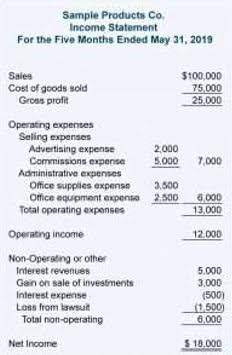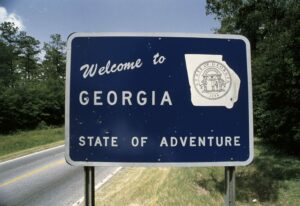
Investment analysts and accountants use the PP&E of a company to determine if it is on a sound financial footing and utilizing funds in the most efficient and effective manner. This is the total amount of net income the company decides to keep. Any amount remaining (or exceeding) is added to (deducted from) retained earnings. Includes non-AP obligations that are due within one year’s time or within one operating cycle for the company (whichever is longest).
- The long-term asset construction in progress accumulates a company’s costs of constructing new buildings, additions, equipment, etc.
- In addition, certain corporate businesses may have assets that include the right to use other companies’ services for specific or foreseeable future periods.
- Intangible assets are nonphysical assets, such as patents and copyrights.
- The detailed categorization of your business’s assets and liabilities in a classified balance sheet will help anyone viewing your balance sheet easily access the specific information they need.
This information is important to any potential investor or creditor. When a corporation has additional money that isn’t required for day-to-day operations, it may consider it unallocated cash. Unallocated funds can originate from various sources, such as corporate payments or the sale of other https://www.bookstime.com/ assets. When a corporation ceases to use an operational asset, it becomes a non-operating asset. Businesses often use non-operating assets for long-term investment or as loan collateral. Fixed assets are acquisitions a firm makes for long-term usage to support commercial operations.
Learning Outcomes
Companies often record prepaid costs as assets on the balance sheet first, then add expensed values to the income statement over time. A noncurrent asset is one in which the firm purchases or invests, but the value does not recur within an accounting year. These investments have a long lifespan, are challenging to convert to cash, and can provide a corporation with long-term financial gains. Prepaid expenses are business running costs that have been paid in advance. As a result, cash decreases on the balance sheet when such charges are paid at the start of the accounting period.

This type of analysis wouldn’t be possible with a traditional balance sheet that isn’t classified into current and long-term categories. While they are not necessarily needed for daily operations, they can still generate revenue for the company. For example, your company may buy some land that it plans to use in the future. This vacant land is not yet part of the company’s operations, but it certainly has value and the potential to generate revenue for the company. Non-operating assets can include marketable securities, short-term investments, interest income on fixed deposits, and vacant land or buildings.
Machinery and equipment
Money (cash and bank savings) is valued because of what it can buy. Therefore, it is exchanged for almost any accessible products or services or can be kept and exchanged for later. The applications vary slightly from program to program, but all ask for some personal background information.
- Current assets are short-term, meaning they are items that are likely to be converted into cash within one year, such as inventory.
- Liabilities are listed at the top of the balance sheet because, in case of bankruptcy, they are paid back first before any other funds are given out.
- They are grouped according to certain traits, such as their intended use for commercial purposes and ease of conversion into money (for assets controlled by the corporation).
- An asset with a limited monetary value, usually a physical form, is referred to as a tangible asset.
- Cash, inventories, and accounts receivable are illustrations of current resources, while arrival, structures, and apparatus are illustrations of settled resources.
- Fixed assets are acquisitions a firm makes for long-term usage to support commercial operations.
Any existing office (even one not being used) is a physical asset, regardless of whether a firm has switched to remote work. This runs as opposed to the growing digital ownership patterns classified balance sheet in metaverse systems. Digital land is not a physical asset because the part of real estate cannot be touched. Management might also utilize valuation numbers to make operational choices.
How are assets classified?
Consequently, as cash is the entity’s most liquid asset, it is shown first under the account heading “current assets” on the balance sheet. All current assets account category items are delivered according to the assets’ liquidity. The balance sheet is just a more detailed version of the fundamental accounting equation—also known as the balance sheet formula—which includes assets, liabilities, and shareholders’ equity. If assets are classified based on their convertibility into cash, assets are classified as either current assets or fixed assets. An alternative expression of this concept is short-term vs. long-term assets.
Of course, selling property, plant, and equipment to fund business operations is a signal that a company might be in financial trouble. It is important to note that regardless of the reason why a company has sold some of its property, plant, or equipment, it’s likely the company didn’t realize a profit from the sale. Companies can also borrow off their PP&E, (floating lien), meaning the equipment can be used as collateral for a loan. Current assets are short-term, meaning they are items that are likely to be converted into cash within one year, such as inventory.
Non-Current Assets
To further illustrate the difference between a balance sheet and a classified balance sheet, let’s compare the two in an example. There’s a good chance you already know what a classified balance sheet is. If you’re not sure what a classified balance sheet is, you’re in the right place. An asset’s cost minus its accumulated depreciation is known as the asset’s book value or carrying value. Mortgage payments for the next fiscal year will total $36,000, which includes interest expense of $6,000. Below are the December 31, 2024, year-end accounts balances for Abled Appliance Repair Ltd.
Eastern Bankshares (EBC) Q3 2023 Earnings Call Transcript – The Motley Fool
Eastern Bankshares (EBC) Q3 2023 Earnings Call Transcript.
Posted: Fri, 27 Oct 2023 07:00:00 GMT [source]
This account may or may not be lumped together with the above account, Current Debt. While they may seem similar, the current portion of long-term debt is specifically the portion due within this year of a piece of debt that has a maturity of more than one year. For example, if a company takes on a bank loan to be paid off in 5-years, this account will include the portion of that loan due in the next year.
Operating Assets
Moreover, a right or other sort of get-to may be lawfully enforceable, meaning a firm may utilize money-related assets because it sees fit. Everything listed is an item that the company has control over and can use to run the business. A balance sheet is one of the primary statements used to determine the net worth of a company and get a quick overview of its financial health. The ability to read and understand a balance sheet is a crucial skill for anyone involved in business, but it’s one that many people lack. The classified balance sheet simply makes this information more accessible.

Completing the challenge below proves you are a human and gives you temporary access.
